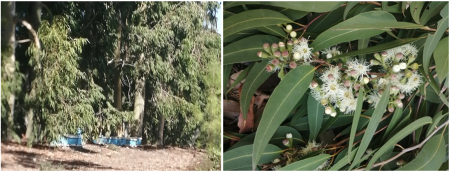
Objective:
This work aims to promote beekeeping activity in rural areas where eucalyptus can play a leading role as nectar species. This objective necessarily involves the identification of eucalyptus species of melliferous interest and the selection of the most successful species in terms of abundance of flowering, its duration, and its spreading throughout the year.
Context:
The present study provides a calendar of the flowering of Eucalyptus species present in two different arboretums: 20 species in humid bioclimate and 16 species in semi-arid bioclimate. Common species, widely represented in reforestation in north-western Tunisia such as Eucalyptus camaldulensis and Eucalyptus gomphocephala, are highly valued for their nutritional value and overexploited by the local beekeepers. However, a large number of species of a eucalyptus still unknown could be valued and used in a beekeeping objective.
Contacts:
Sondes Fkiri, sondesfkiri@gmail.com, http://www.inrgref.agrinet.tn/
Mariem Khouja, khouja.mar@gmail.com , http://www.inrgref.agrinet.tn/
Ezzeddine Saadaoui, saad_ezz@yahoo.fr , http://www.inrgref.agrinet.tn/
Mohamed Larbi Khouja, khouja.larbi15@gmail.com, http://www.inrgref.agrinet.tn/